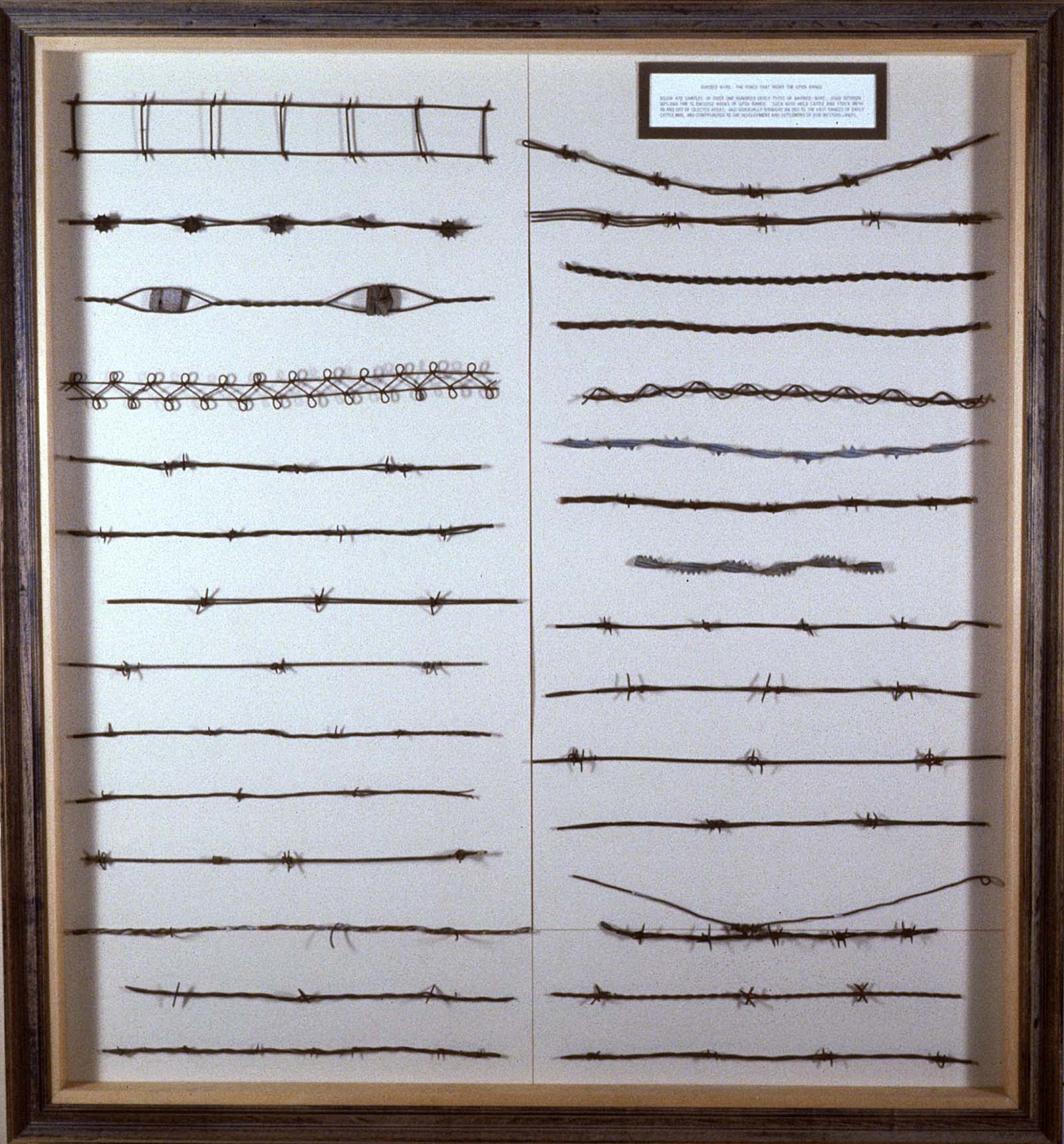Originally featured in Points West magazine in Summer 2014
Few inventions more profoundly altered the appearance of the American landscape—and the contours of western history—than barbed wire. In 1874, Joseph F. Glidden of Illinois received a patent on barbed-wire fencing. Many others claimed to have invented it, however, and the legal thickets over their claims were as tangled, pointed, and nasty as the wire itself. Yet little dispute surrounds its impact. From less than five tons in 1874, its production soared to nearly a hundred million pounds annually six years later.
Though used throughout the United States, most barbed wire was sold to western farmers eager to keep free-roaming cattle off their lands. Fierce and often bloody “wars” between farmers and “fence-cutters” ensued in Wyoming, Texas, and other parts of the West.
By the early 1890s, however, nearly all privately-owned land in the West had been fenced with barbed wire, and the halcyon days of the open range were all but ended. Illustrative of the diverse variety of designs, the examples shown here are part of a larger collection of samples assembled by noted western artist and illustrator Nick Eggenhofer. He presented them to the Buffalo Bill Museum.
Barbed wire samples, ca. 1880 – 1920. Part of a collection of some sixty pieces. Gift of Nick Eggenhofer. 1.69.467.1
Post 151






